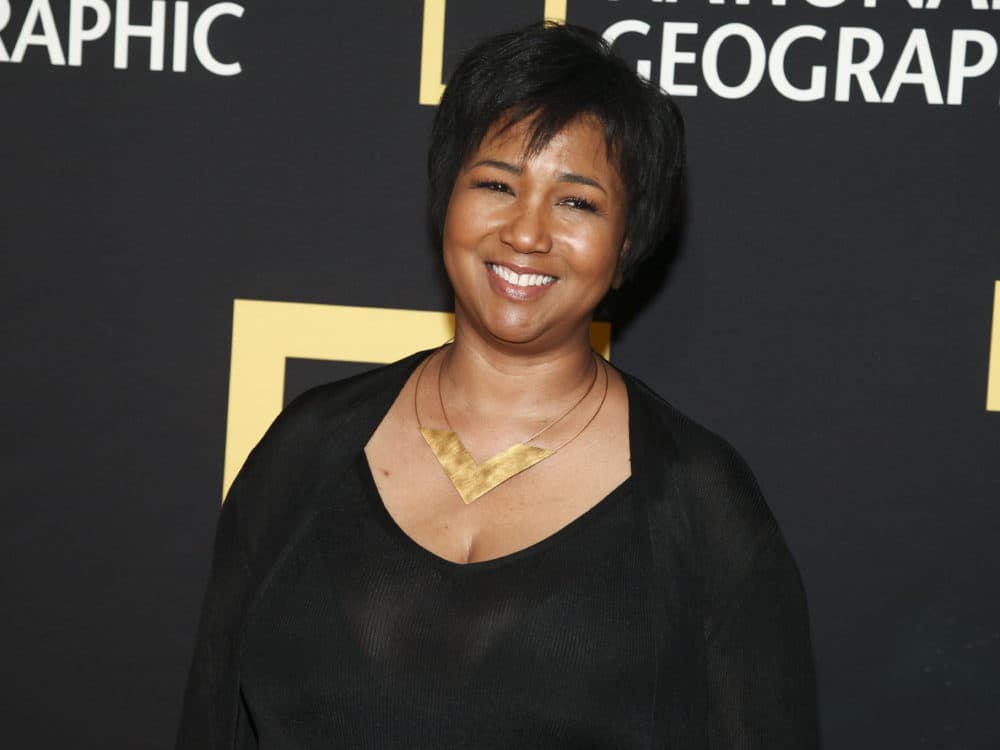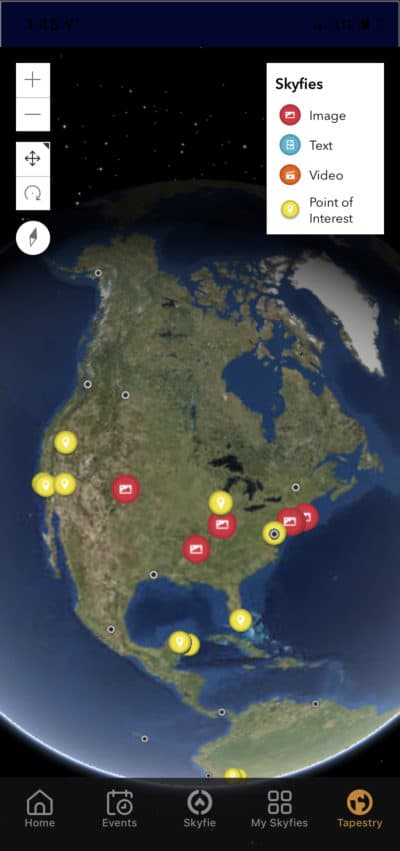Advertisement
This Former Astronaut Wants Your Help To Take A 'Sky Selfie' Of Earth
Resume
In 1992, Mae Jemison went into orbit on the space shuttle Endeavour and became the first African-American woman to go to space.
Now, 25 years later, Jemison is launching a new initiative called Look Up. Over the course of 24 hours she wants people to upload photos of the night sky and record their reactions to what they see.
Here & Now's Jeremy Hobson talks with Jemison (@maejemison) about her new app and what she learned from going to space.
- You can find the Skyfie app in Apple's app store and the Google Play store
Interview Highlights
On she's hoping people will do using the Skyfie app
"We're asking them to share what happens when they look up at the sky, daytime or nighttime, for 24 hours around the globe. Just the simple act of connecting through looking up, going outside, looking up, will help us to understand maybe a little bit more about each other, to feel just a tiny bit more connected around this planet. Some people will look up at the sky and they will feel love, they'll feel hope, some people may feel afraid, they may feel wonder, expansive. How they express that is what we want to capture, and we want to have it shared with people in real time.

"So it's not just, you're going to take these photos and you're going to put them up. We're going to display them to the world in real time on a digital globe that people can spin and they can look at, they can expand, they can go to different folks around the world, so I can know in Houston, Texas, what someone is thinking in New Zealand."
"Just the simple act of connecting through looking up ... will help us to understand maybe a little bit more about each other, to feel just a tiny bit more connected around this planet."
Mae Jemison
On getting a view of Earth from space that few people have
"I actually have a view of Earth that I think we all can have, and that view of Earth is what happened when I was a little kid when I used to look up, and imagine that some child on the other side of the Earth was looking at the same thing I was looking at, and I wondered what this was like, and so it felt really, really comfortable, it felt really good to me, to know that we were connected that way. We're calling the app that we have, that's completely free, we're calling it a Skyfie app — it's a sky selfie. And that's sort of our connection between the sky, humanity and the universe, all in one."
On her work with 100 Year Starship, and whether humans will need to leave Earth in the next century
"100 Year Starship is about making sure the capabilities for human interstellar flight exist within 100 years, and it's really about radical innovation, pushing our knowledge, pushing the technologies and our capabilities in terms of energy, in terms of governance, in terms of human biology and health, and using something that's really difficult like interstellar flight to do it. But here's the thing: If we don't figure out how to live on this planet, we can forget about anything else. And even if we're able to get 500 people on Mars, what 500 people are we going to send? Who gets to decide? I would rather us understand and make sure that we're keeping this planet well than counting on a plan B.
"Now what's fascinating and what's incredible about space exploration is it has really changed fundamentally how we see ourselves. We know so much more about our planet through being able to look back down at our planet from satellites. We know more about the Earth because we've been able to study Venus, we've been able to study Mars and understand how planets form and what could happen to them.
"Yet at the same time, the balance that we have is taking that knowledge that we live on a planet, we live on our own spaceship, and the only thing that's happening is we have to figure out as a crew how to live together. That means that we don't foul our planet through pollution. But we only do that if I understand that what I do changes what happens to other people, that we understand that we have to live on this planet and our behavior makes a difference."
On always being the first African-American woman to go into space
"It was really interesting to me, because not only was I the first African-American woman, but I was the first woman of color in the entire world to go up into space. And as a little girl growing up on the South Side of Chicago, there is no way that I would have imagined that by the time I got old enough to go into space that I would be the first anything, because I would have thought that we would have had lots and lots of other people going up.
"But being that, being the first woman of color in the world to go into space, what I realized that my responsibility is including other people — both in, yes, being space explorers, whether it's being the rocket scientists, the suit technicians or being crew members, to involve them in space exploration. Yet even as important is making sure that we understand that individuals on this planet have a right to be involved with space exploration, that they understand the impact of this technology and how profound it can be to help us build a better world."
On whether she wants to return to space
"Well you know what? We're in space right now. And if you look at the sky tapestry, which lets you rotate this Earth, we'll see a starry background. ... Would I love to go to Mars and set foot? Absolutely, in a heartbeat. But we're in space now, so I'll deal with that."
This segment aired on October 18, 2018.